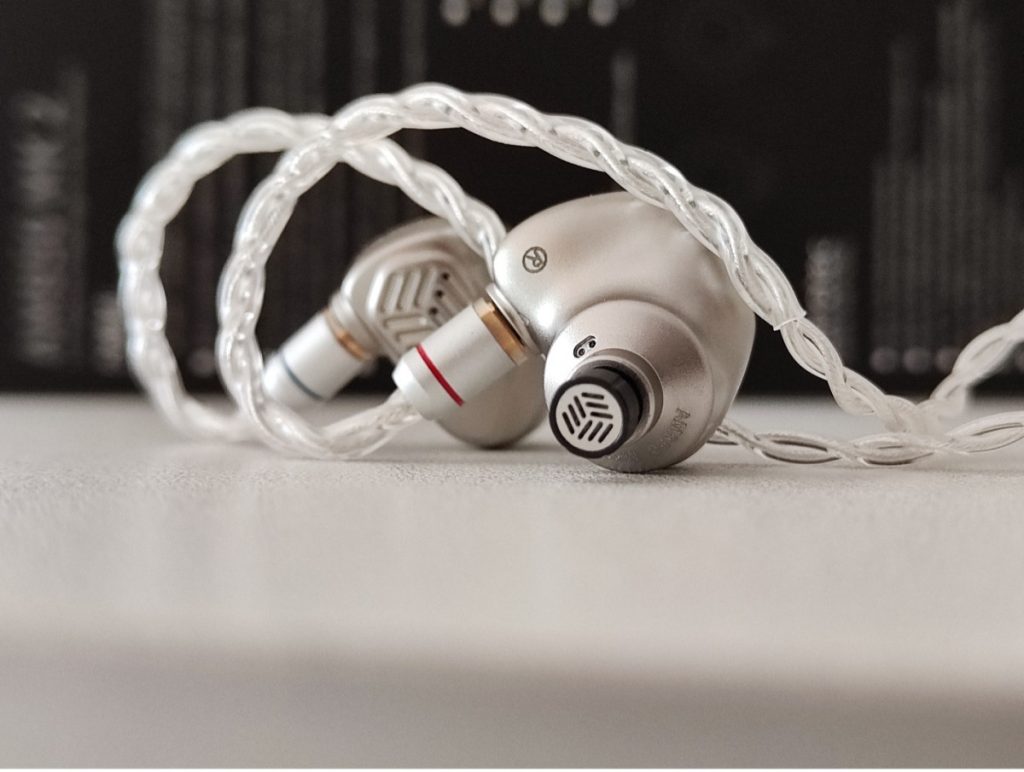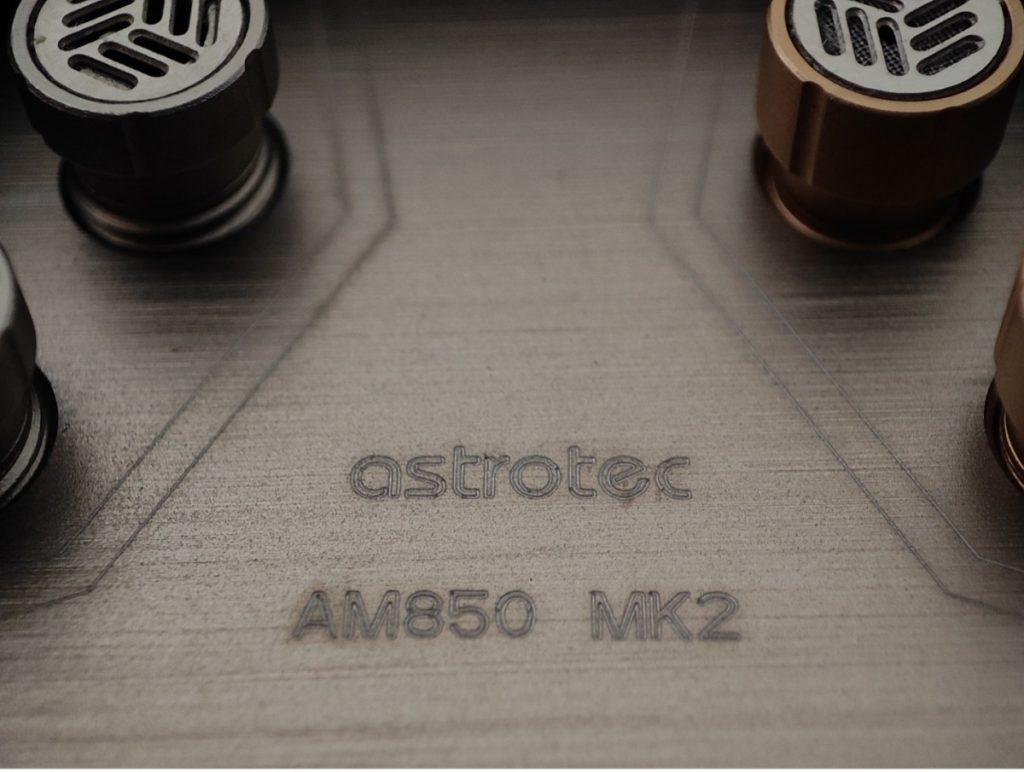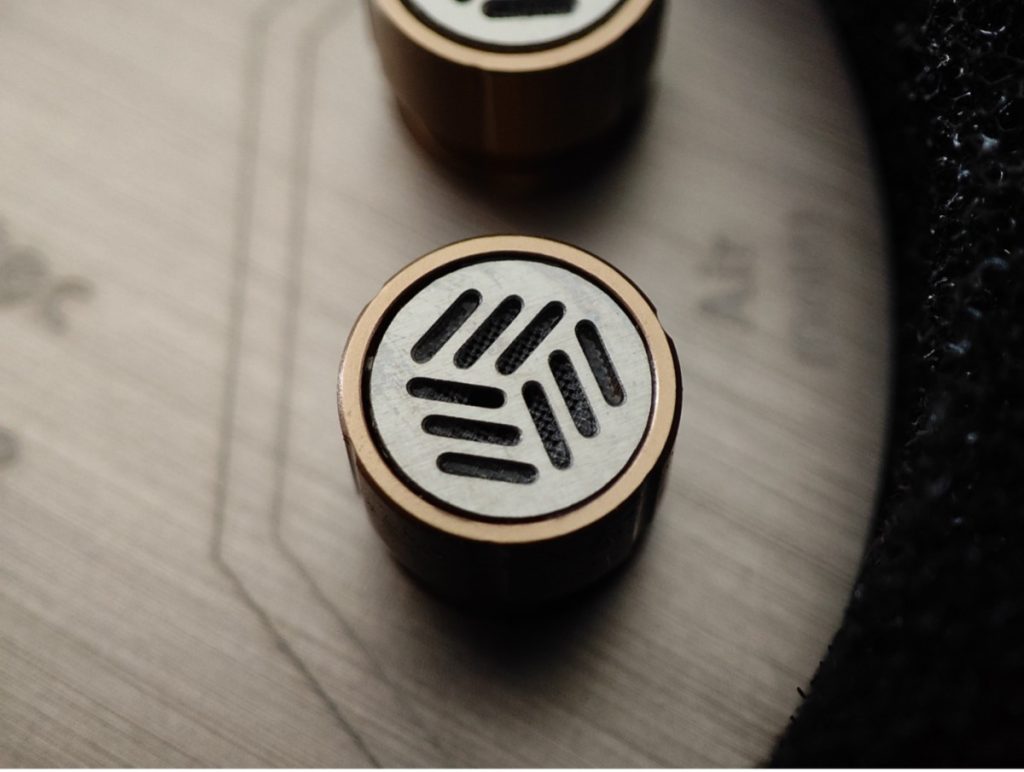Introduction
Interchangeable nozzle filter design has been the recent trend adopted in the Chi-Fi IEM market. Astrotec AM850 MK2 is one of the most recent one utilizing this design to allow sound profile customization. Equipped with a second-generation Liquid Crystal Polymer (LCP) diaphragm for its dynamic driver, the Astrotec is introducing this IEM at a competitive price bracket of $200. Can they hold up with the competition? Let’s see.
Packaging & Accessories
The IEM comes in a nice medium size box. Inside the box you get: a nice dark grey leather case, three different types of nozzle filter, single ended silver OFC cable that feels very generic, foam eartips, white eartips ala Final E, coloured stem eartips ala Spinfit, a cleaning brush, additional tiny pouch specially for the IEM head unit only, and a manual.
Regarding the eartips included except the foam eartips, they are pretty much almost useless because the stem bore size are so small that they couldn’t fit with any of the filters. Only the Spinfit-like eartips could be installed but required quite amount of efforts and forces. I don’t understand the logic behind the eartips design included by Astrotec. Rant aside, after various third party eartip rolling, the stock Spinfit-like eartip sounded the best at least to my ears. Sigh. Therefore, the sound evaluation in this review is based on this stock eartips.
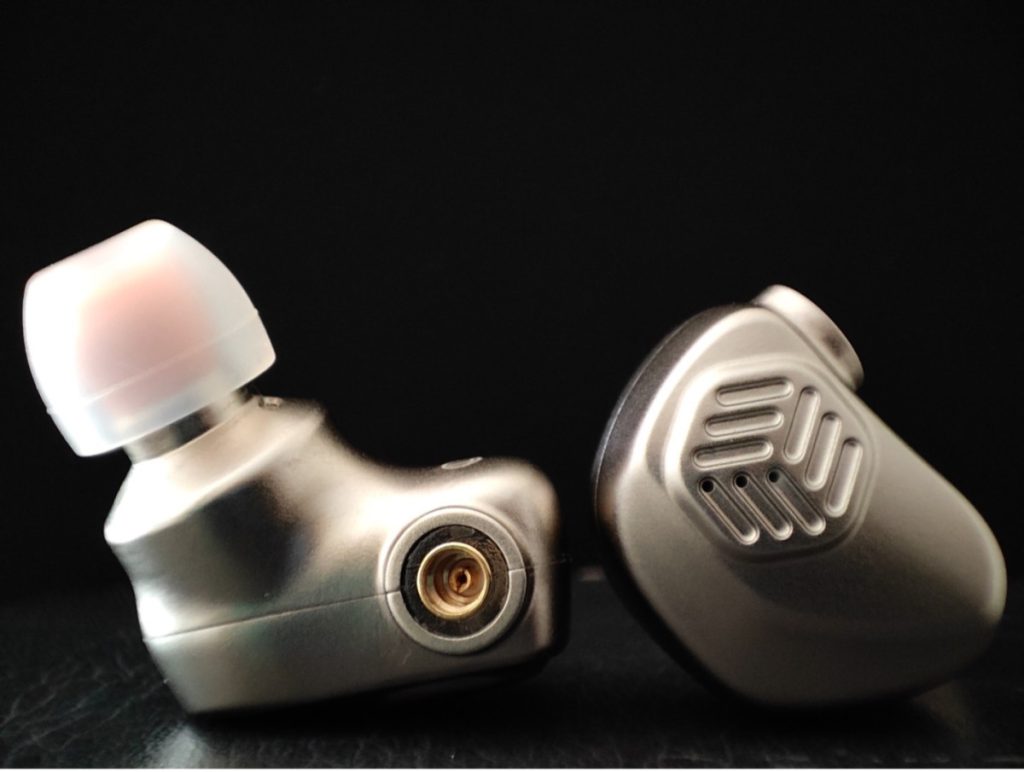
Specifications
Driver: 10 mm dynamic driver (LCP diaphragm)
Input: 1 mW
Impedance: 32 Ω
Cable: High purity OFC cable (1.2 m ± 5 cm)
Max Input: 3 mW
Sensitivity: 106 dB / 1 mW (S.P.L at 1KHz)
Connector: 3.5 mm stereo plug
Frequency Response: 5 Hz – 35 kHz
Retail Price & Where to Get
Review unit provided by Astrotec Global. We would like to thank Astrotec for giving us the opportunity to review this product. The AM850 MK2 is currently priced at ~RM 740 (USD 169).
AM850 MK2 – Astrotec (astrotecglobal.com)
Source Pairing
-
Windows 10 > Fiio K9 Pro ESS > AM850 MK2
-
Sony NW-ZX300 > AM850 MK2
-
Android 12 > DDHiFi TC35B> AM850 MK2
Test Tracks
Tone & Presentation
With the default black (Neutral) nozzle filter, the AM850 MK2 has an almost balanced sound signature. But I do think that midrange stands out slightly more than the bass and treble which made me think that this IEM has a somewhat mid-centric tonality as well. Changing to grey (Tide) nozzle decrease the amount of bass slightly while also increase the midrange even more. The gold (Air) nozzle on the contrary shift the bass emphasis towards the upper mid and treble region and so it sounds brighter. Personally, I have no idea which nozzle is my favourite therefore, the sound impression onwards is based on the default black (Neutral) nozzle filter.
Bass
Starting from the subbass, the AM850 has a real presence of subbass frequencies, only that the quantity is just neutral. The midbass on the other hand is slightly elevated, just slightly so that it adds a little bit of punch in the bass. I would say that the bass has good accuracy, the amount will depend on the record itself rather than having the conventional fun type of bass. That being said, this IEM also has a very clean and well separated bass-midrange transition resulting in zero midbass bleed whatsoever. Despite all the goodness, the timbre is a turn off, unfortunately. Oddly, the bass sounded like a balanced armature (BA) driver in which it lacks natural decay, slam, and that “openness” feel for a single dynamic driver IEM. And because of that, the LCP driver inside sometimes sounded weak when it comes to dynamic. Nevertheless, the speed and resolution are very good which make this IEM suitable for digital sounding records.
Midrange
The midrange however has a different story. Although there is a peak somewhere in the 2 kHz region that can get too hot sometimes, the whole mids including lower mids is generally tuned pretty good if not very well. If you’re a vocal lover, this IEM is very good at that because the mids have a very good presence and forwardness to them. Based on my listening test, classical, orchestra, epic, and soundtrack records honestly sounded impressive and full. This is due to the added density throughout the midrange which helps to provide solid foundation for brass and string instruments. Perhaps timbre quality for piano and acoustic guitar are not so natural due to the slight imbalance in the upper mids region.
Treble
In the product page, Astrotec mentioned a “wide treble” performance. Whatever that means, I don’t think the performance lives up to that statement either way. The highs are unstable and lacking in proper peaks and valleys. The treble sounds compressed and muffled while at the same time being peaky in the lower treble. Cymbal crash sounded artificial where it lacks in proper decay. Top end also lacking in air resulting in digital-like timbre for the likes of snare, drum, and percussion instruments.

Soundstage & Imaging
Staging size is not the strongest suit for this particular IEM. The width is slightly narrow than what I expected for the price tag, but at least three-dimensional space is obtainable along with good imaging localization. In spite of that, there are also occasions where some instruments sounded somewhat distant or far away. I think this is intended by tuning the frequency response in order to render the effect of having spacious soundstage. Though I feel like this is artificial, but at least it sounded grand when listening to classical and orchestra music.
Instrument Separation
One of the best attributes of the AM850 MK2 is the instrument separation and detail retrieval. The custom second gen LCP diaphragm in my opinion works wonder, performing similarly well as some of the higher priced single dynamic driver IEMs that I possessed. But of course, as expected for a single dynamic driver IEM, super busy tracks such as metal and epic orchestral piece may sound a little struggled. Even more so when the dynamic is sort of weak which may limit the engaging or immersive kind of feeling to the music.
Drivability & Synergy
The impedance and sensitivity are rated at 32 Ω and 106 dB/mW, respectively which is simply an easy to drive IEM. I found that this IEM does not have to be amplified or paired with expensive DAC to sound good since the scale of improvement is only small in margin. But I do recommend pairing it with warm or smooth sounding source just to minimize the unwanted peaks and hotness in the mid and treble. Also, try to replace the stock cable with better copper cable because the sound improvement is quite substantial in my case. I changed the cable to OEAudio 2DualOFC cable and noticed some upgrade in certain areas like refinement, timbre quality, smoother peaks, and soundstage width.
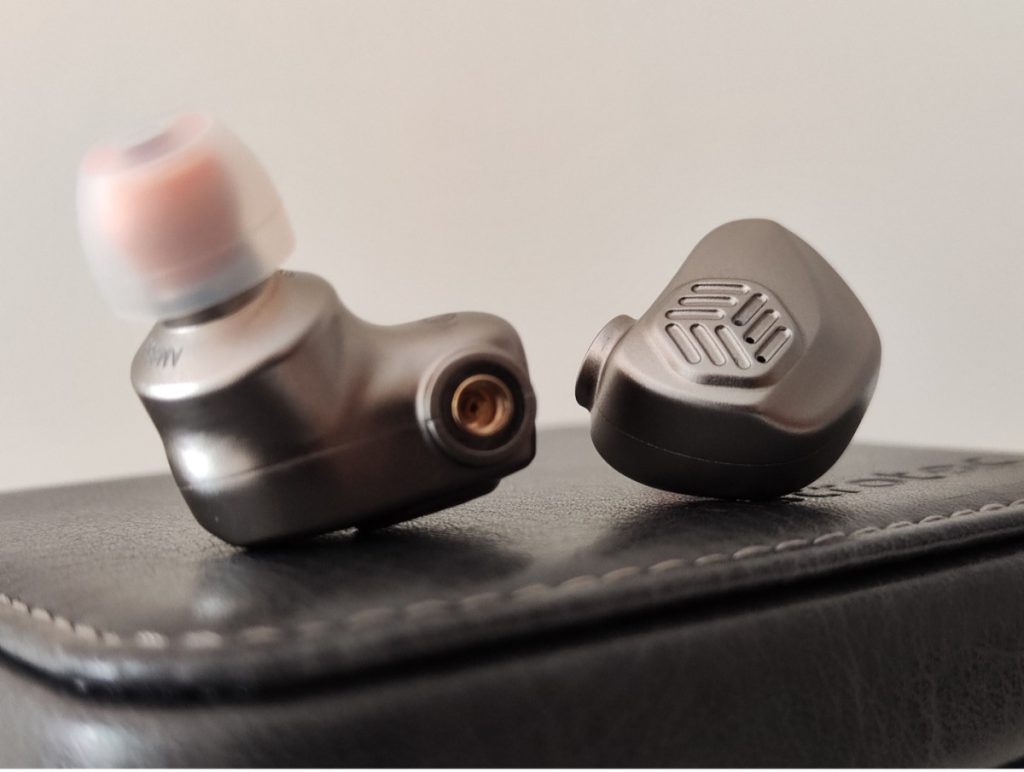
Comparison
Tanchjim Oxygen:
The long-time excellent CNT driver-based IEM, Tanchjim O2 is tuned to Harman Neutral preference target instead but with more cost in price. The mids are slightly pulled backwards so it sounded a little thinner for vocals. However, the extension at both ends is superior with the O2 where the subbass rumble and top end air have more presence. Resolution of the O2 is more or less similar if not better than the AM850, but the soundstage, imaging, and dynamic are obviously better on the O2. Timbre and coherency are hands down superior with O2 because that’s what the O2 is known for, no doubt about that.
Moondrop Aria:
Like the Tanchjim Oxygen, Moondrop Aria is a budget Harman Neutral tuned IEM. That being said, Aria sounds more neutral or flatter in every aspect compared to the warmer sounding AM850 MK2. While the Aria being inferior in resolution and other technical departments, the timbre is much more natural than the AM850 MK2.
CCA CRA:
Considered as one of the best budget IEM you can get at the moment, CCA CRA is a v-shaped sounding IEM. In relative to the AM850 MK2, the CRA has greater amount of bass and treble with better subbass and upper treble extensions. While the mids are much more recessed, CRA pinna gain is safer and freer from any harshness, though it has stronger sibilance. Technicality wise, price tag reflects the performance in which the AM850 MK2 performs significantly better than the CRA.
Sonic Memory SM2:
Also, slightly more expensive, the SM2 is an obscure but excellent single dynamic driver IEM. Comparison between these two will be interesting since they’re both sounded somewhat analytical and quite hot in the upper region. Tuning wise, the SM2 takes the DF-neutral approach with more intense post 2 kHz peaks but the treble still remained as one of the best I’ve heard. Timbre is first in class, soundstage is much wider, and resolution is noticeably better with the SM2 though it needs a good source for that. Meanwhile, AM850 is a darker sounding IEM with better midrange/vocal performance

For Who?
Astrotec AM850 MK2 is not an all-rounder performer in my opinion. But they are very good for vocal and “audiophile” type of genres such as classical, orchestra, soundtrack, and etc. They are also generally good with other genre such as pop and electronic but not as special as the aforementioned genres. Or if you don’t even care what is timbre, I think this IEM is quite good.
Conclusion
Competition is stiff for the IEM market especially with single dynamic driver IEM at this kind of price range ($200). While the Astrotec AM850 MK2 has a respectful level of technical performance, the tuning execution is not perfect. For those who prioritize timbre and naturalism, AM850 MK2 is probably not the best choice. Ironically, this IEM has a hidden ability where it shines with classical, orchestra, and vocal types of music despite the timbre quality. Also, not to forget the interchangeable nozzle design and solid build quality.









